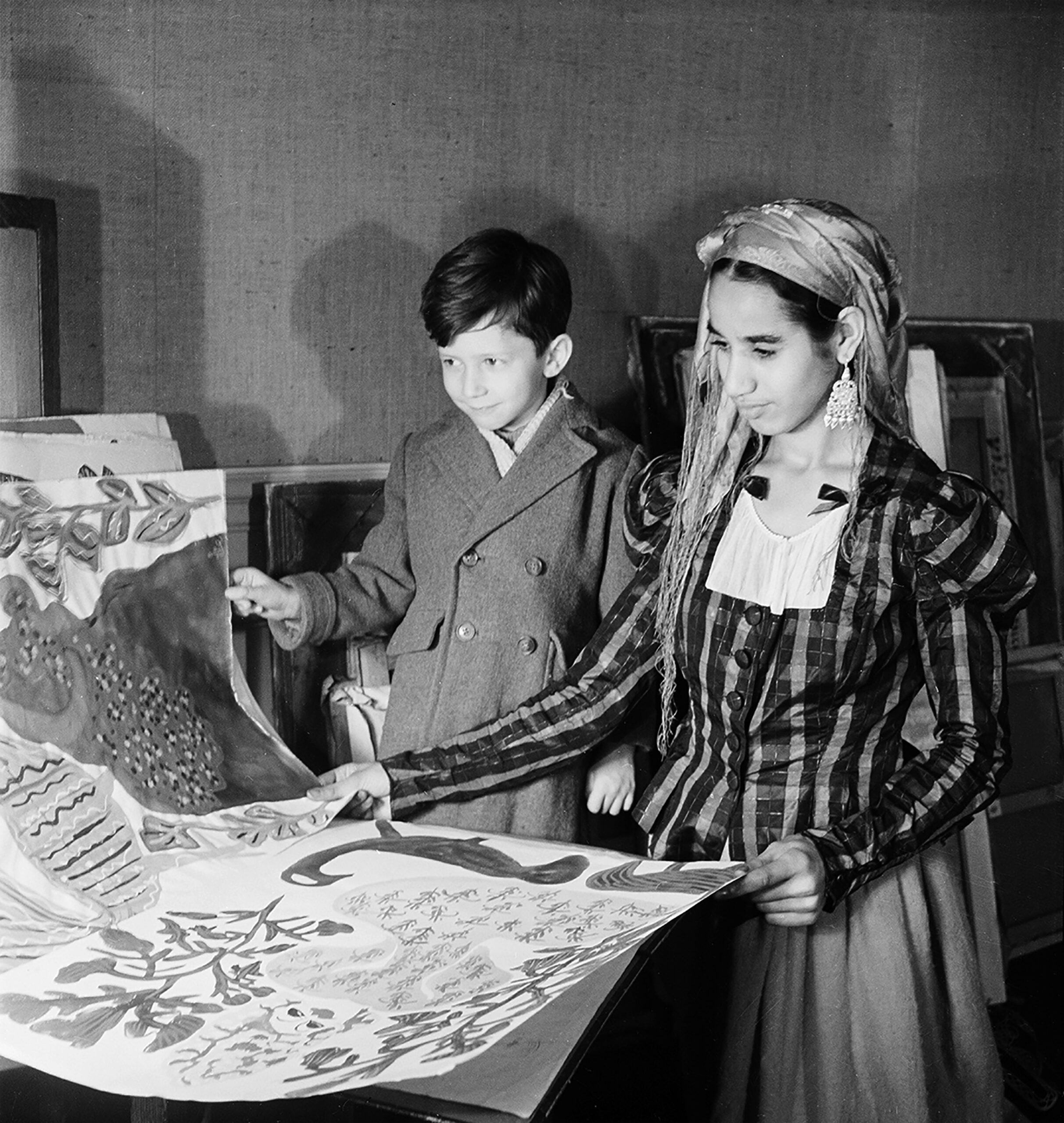
Bernard Maeght and Baya, photographer: André Ostier in 1947
© André Ostier / Association des Amis d’André Ostier
Ticketing online or on site
For group visits, please contact the reservation service accueil@fondation-maeght.com
Backpacks are not allowed in the Foundation’s exhibition galleries. A cloakroom is available for your personal belongings.
BAYA
October 4, 2025 – April 24, 2026
Anny Courtade Gallery
A singular figure of Mediterranean art, Baya left a lasting mark on the second half of the 20th century with a universe that is both poetic and radiant. Her work unfolds in a profusion of vegetal forms, vivid colors, and exalted female figures, offering a joyful celebration of life and imagination.
This exhibition invites visitors to enter Baya’s enchanting world, populated with birds, music, and figures adorned in sumptuous attire. It offers the opportunity to explore a unique artistic journey, shaped by decisive encounters yet above all driven by a creative freedom that continues to resonate today.
Born Fatma Haddad in Bordj el-Kiffan in 1931, Baya occupies a unique place in the history of 20th-century Mediterranean art and remains one of the leading figures of the Algerian art scene in the second half of the century. From an early age, she created clay models and drew on the earth before being encouraged by Marguerite Benhoura and Jean Peyrissac to work in gouache.
In 1947, Aimé Maeght discovered her work in Algiers and decided to present it at his Paris gallery. The exhibition, accompanied by a text by André Breton for the Derrière le Miroir catalogue, introduced the public to a young self-taught artist, who at the same time wrote her first text, Le grand zoiseau. Thanks to Maeght, Baya moved to Vallauris, where she worked in ceramics alongside Pablo Picasso. Her universe quickly drew critical attention, notably through an article by Edmonde Charles-Roux in the American edition of Vogue in 1948.
